Bisa Butler FEELS like she has been around for many, many years, so it's no wonder that I felt behind the curve when I became aware of her magic during her exhibit debut at The Art Institute of Chicago in 2020. My mom really wanted to go and see the exhibit and it was around my birthday at the time, so we went. And we were amazed. If you're not aware, Butler is a fiber artists who uses fabric to create intricate quilts that I can only explain as sew by numbers, with a focus on the celebration of being Black.
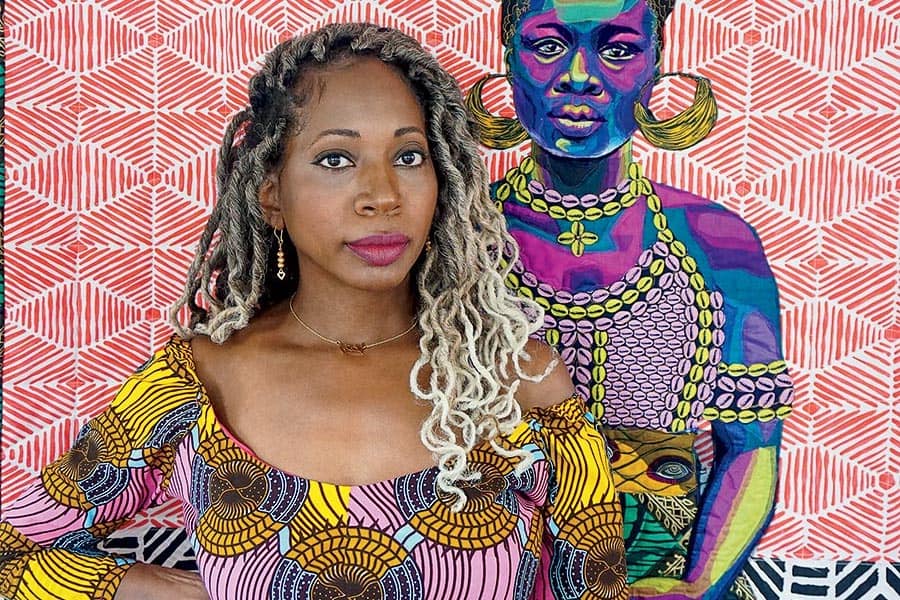
Bisa Butler
Butler has created quilts that often show the regal nature of Black folks whether they are famous or just everyday scenes. While walking around the exhibit while it was at the Art Institute of Chicago. I know my way around a sewing machine, however, the details that are incorporated into Butler's work left me with my mouth agape.
There's something about the bold choice to change up the color of our skin with reflections of orange, reds, and yellows. It was a masterclass in showcasing just how deep our beauty is, and how we're reflected with every color.
Take this piece for example, Safety Patrol. This reminds me of my old neighborhood on the West side of Chicago. We ran deep, and ALL of us dressed like this back in the day. Ankle socks with dress shoes and dresses that came down to our knees so we could skin them properly while playing street games with all the guys. I miss it.
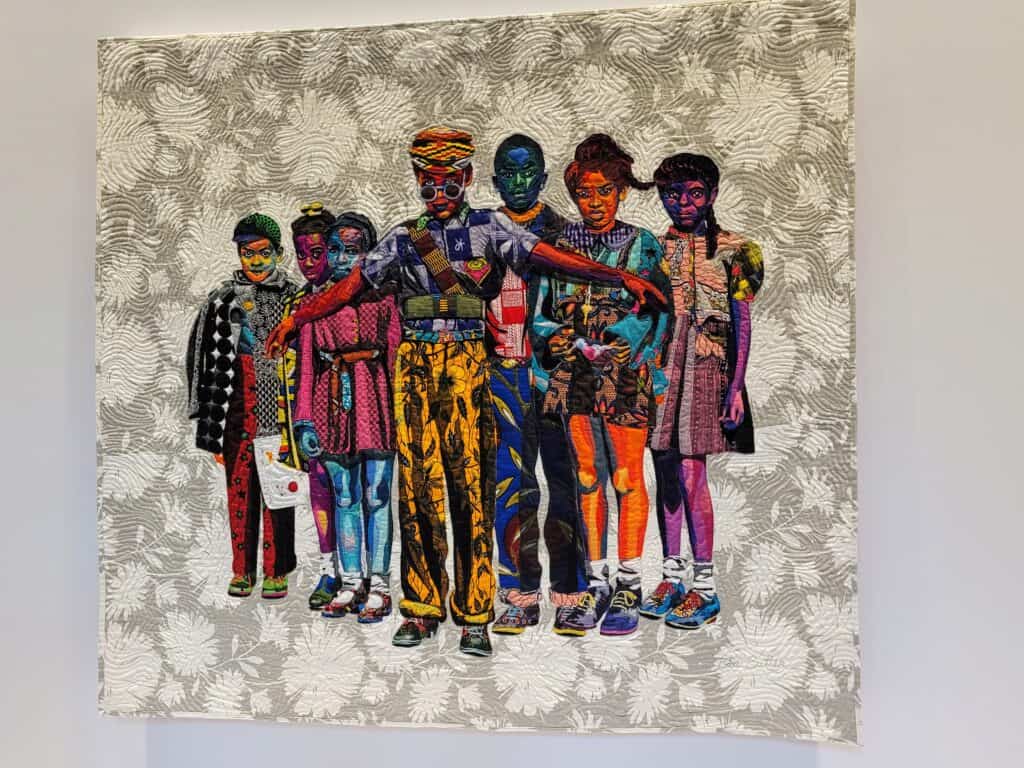
The oranges throughout her art ALWAYS catch my eye. There's something about the beginning colors of the rainbow against are skin that says we're winning - EVERY. TIME.
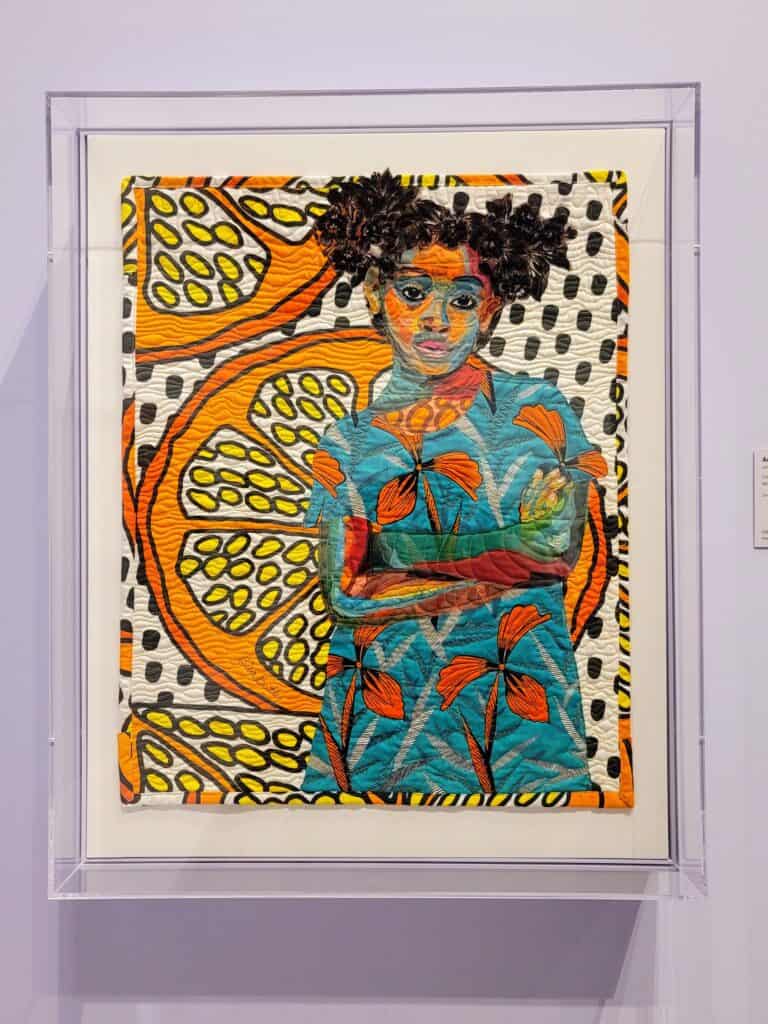
Then you have this - the class. The strong stances. The beauty. I love it.
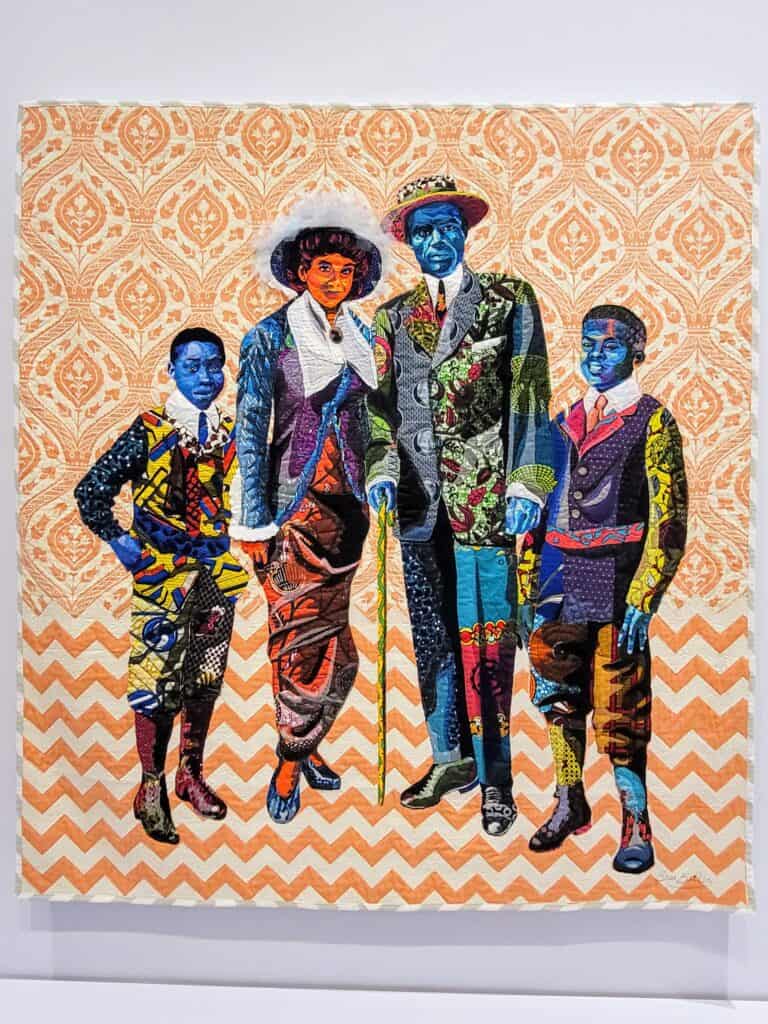
The attention to detail that she has for things like the shoes and scrunches of the pants. It's amazing. I mentioned in Faith Ringgold's post that I could see some similarities in the work that she has done and the way that Butler took it and ran. And then in researching Butler, she stated that Ringgold was in fact one of her inspirations.
In undergrad at Howard University, Butler majored in fine arts and graduated with a degree in painting, but she felt that she never made the connection with the medium the way that she wanted. Which led to her creating fabric collages on canvas, and the work that we see today.
Butler completed her master's degree in art education from Montclair State University in 2004. There, she took a Fiber Art class that inspired her choice of quilting as an artistic medium. She said in an interview, "As a child, I was always watching my mother and grandmother sew, and they taught me. After that class, I made a quilt for my grandmother on her deathbed, and I have been quilting ever since." When she replicated her grandmother's wedding photo in quilt form, a piece entitled "Francis and Violette" for a final project, both she and her professor recognized that she had created an entirely new form of quilting.
Through her quilts, Butler aims to “tell stories that may have been forgotten over time.” She often uses kente cloth and African wax printed fabrics in her quilts, so her subjects are "adorned with and made up of the cloth of our ancestor."
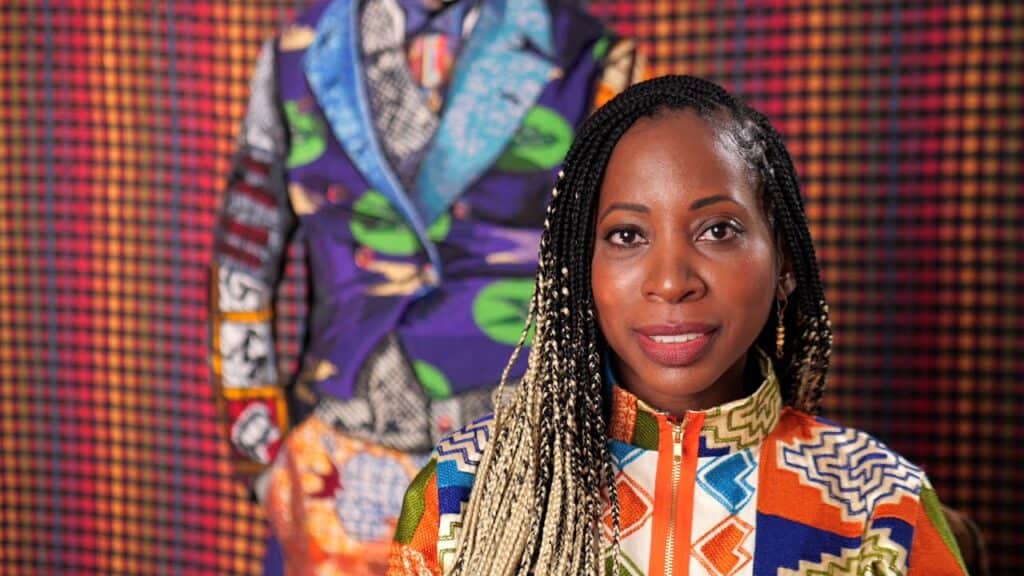
Butler's quilts both heavily incorporate African textiles a well as expand on a rich African American quilting tradition. She explains in her artist statement: "African Americans have been quilting since we were brought to this country and needed to keep warm. Enslaved people were not given large pieces of fabric and had to make do with the scraps of cloth that were left after clothing wore out. From these scraps the African American quilt aesthetic came into being....My own pieces are reminiscent of this tradition, but I use African fabrics from my father’s homeland of Ghana, batiks from Nigeria, and prints from South Africa."
Butler typically works in bright jewel tones rather than representational colors to depict skin tone. Color serves to convey the emotions of the individuals in her quilts rather than their actual complexions. While at Howard, Butler was mentored by members of AfriCOBRA. The artist collective's bright, colorful aesthetic and aim to create positive representations of Black Americans can be found in Butler's body of work, as well.
Her quilts often feature portraits of famous figures in Black history, such as Paul Laurence Dunbar, Jackie Robinson, Frederick Douglass, and Josephine Baker. She uses a variety of patterned fabrics, which she carefully selects to reflect the subject's life, sometimes using clothing worn by the subject. Her portrait of Nina Simone, for example, is made of cotton, silk, velvet, and netting, while that of Jean-Michel Basquiat is made of leather, cotton, and vintage denim.
Along with her portraits of notable figures, Butler also creates pieces featuring everyday, unknown African American subjects that she bases on found photographs. She describes her fascination for her nameless subjects' unknown stories: "I feel these people; I know these stories because I have grown up with them my whole life." She strives "to bring as many of these unnamed peoples photos to the forefront" so "people will see these ordinary folks as deserving of a spotlight too."
Her pieces are done in life scale in order "to invite the viewer to engage in dialogue--most figures look the viewers directly in their eyes." It can be said after seeing her work up close and personal with my mother, that is exactly what happened. Every person who sidled up next to us to view a quilt couldn't help but express their joy and amazement at the work before us. It's an experience I feel everyone needs to have. Young and old.
And if you think that her creativity is limited to seeing her quilts on a wall, you haven't been paying attention to the covers that she's created for Time Person of the Year or the covers of best-selling books by the likes of Tarana Burke.

You can follow Bisa Butler on Instagram | Website | Facebook

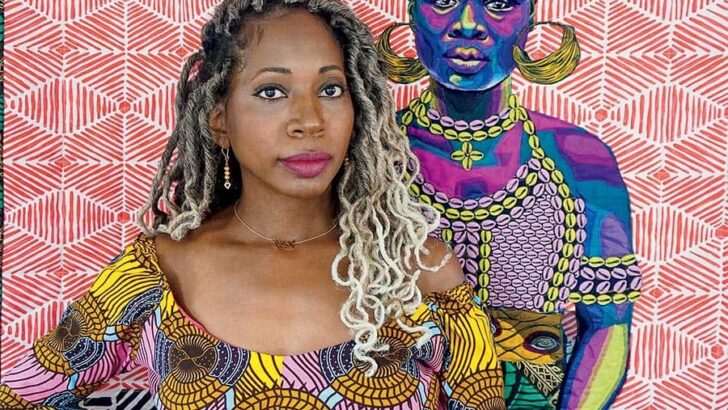
BWil
Thursday 24th of February 2022
This was an amazing display. Pictures do not reflect the beauty in totality, these pieces must be seen in person. Bisa Butler has an artistic mind that is truly unique.